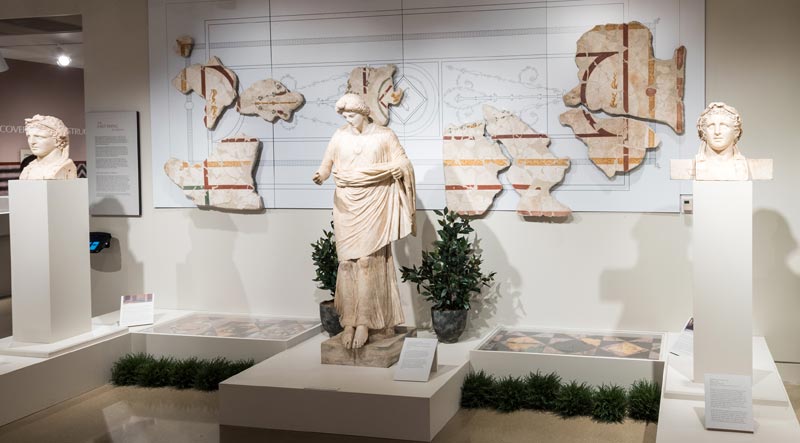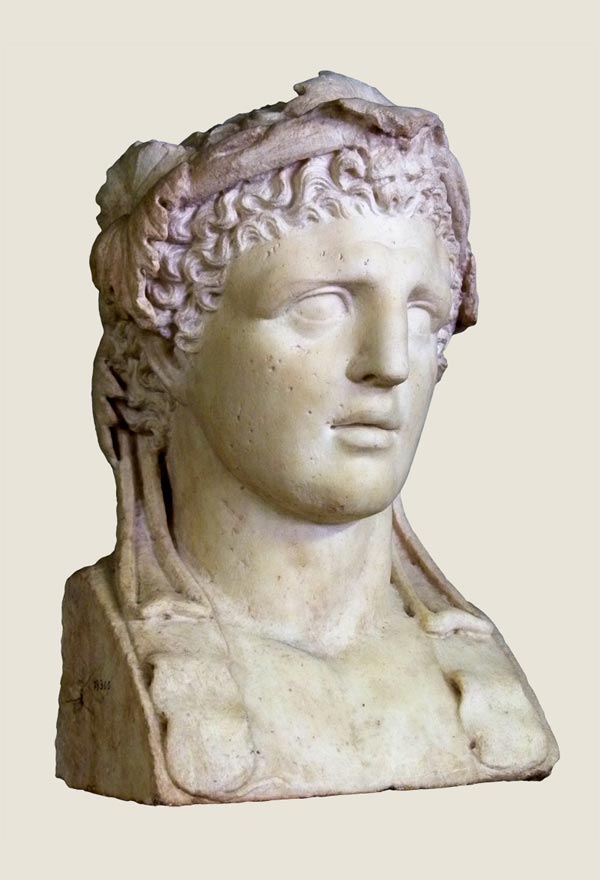
Victory, (the Greek Nike) gazes downward as she descends from the sky, her feet not yet touching the ground. Her motion causes her garments to cling to the front of her body and flutter outward in back. Victory’s wings, now missing, were once attached to her back. They may have been made of bronze.
This Victory’s extended arms and the position of her hands suggest that she was carrying objects, perhaps a wreath and a palm. If the east garden was intended to evoke the Greek gymnasium where Greek youths trained for athletic contests, as has been proposed, the personification of Victory would likely have been understood as bringing the prizes for the successful athletes.





